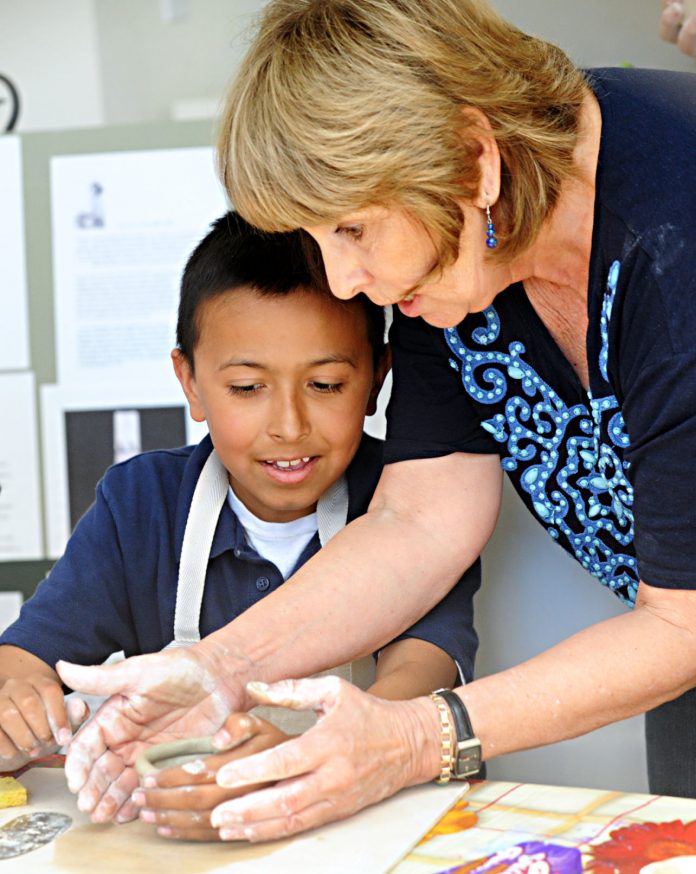
It was the first day of class for a six-week “Creating with Clay” program and Erik Lujan didn’t want to leave by the end.
Lujan, 10, is part of the San Benito County Arts Council’s “After School Art Program” that partnered with Youth Alliance to let about 30 underprivileged students try their hands at ceramics.
“They just love it,” said Louise Roy, who taught the subject at San Benito High School for 22 years before retiring and teaching these classes. “It’s hands on. You get your hands dirty.”
In this multi-week class, Lujan and other students will form coil pots, teddy bears and candy dishes; learn the basics of glazing and painting; and walk away with art standing the test of time.
“I think it’s great,” said Lujan’s father, Mario Campos, 37. “I think the interaction for the kids is pretty good.”
Students gathered last week at ArtSpace, the council’s new home at 240 Fifth St., where they hovered around an oval table and transformed chunks of clay into pinch pots. They formed the artwork by hand in the style of the Anasazi Indians, who made pottery without a wheel more than 2,000 years ago.
This series of classes is the second of three giving local students a chance to connect with their creative sides through ceramics.
“You go into the right side of the brain and there’s no (sense of) time,” Roy said. “You escape into another dimension and there’s all sorts of possibilities there.”
Roy and Stephanie Skow, one of her teacher assistants at the high school 16 years ago, were Lujan’s instructors for the day. Skow, 31, will be taking over this series and teaching the final set of courses starting in mid-March.
Roy will still be involved in the creative process, as completed projects will head to the kiln in her garage where they can be heated to a toasty 1,200 degrees, which transforms clay into a bisqueware, or pottery that’s been fired once and can be painted or glazed. Roy has noticed most students prefer painting to the more traditional glazes, which require a second firing in her kiln.
“A lot of them glaze a few pieces and paint,” Roy said. “Because then they can take ’em home right away.”
With kids of her own, Skow encourages students to try their hands at crafts and art projects instead of just watching television.
“I always loved working with kids,” she said. “I love introducing children into art. I think art should be a part of every child’s life.”
Part of the adventure with teaching ceramics is watching the students warm up to the new material, which can be difficult to manipulate at first.
“I think the first time, they’re all a little hesitant,” Skow said. “And I’m like, ‘You can’t hurt the clay.’”
When students such as Erik Lujan walk away beaming, it’s been a successful day. The clay pots the students made sit in rows drying. Eric shrugs his shoulders and says class was “fun,” but his father knows better.
“You can tell by the smile on his face he enjoyed it,” he said.









